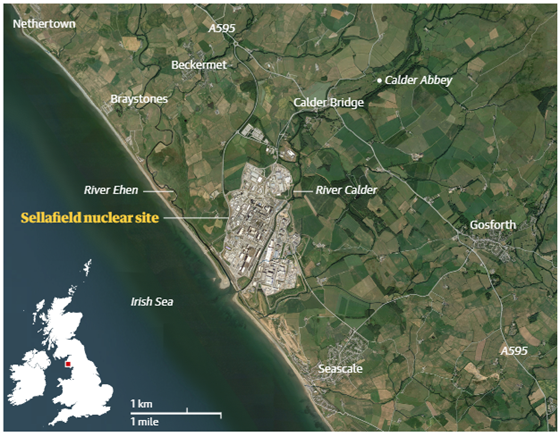Brother
Professional
- Messages
- 2,590
- Reaction score
- 483
- Points
- 83
Spyware has been hidden in the facility's networks for 8 years.
The IT systems of the Sellafield nuclear facility in the UK were attacked by hackers. An investigation by The Guardian revealed that senior employees at the plant were constantly hiding information about the attacks. It is not known when the systems were first compromised, but the first breaches were discovered back in 2015. Sellafield networks have discovered "dormant" malware that can still be used for espionage.
Hackers may have gained access to the most sensitive materials on the site. The full extent of lost data and ongoing risks to systems remains unknown due to Sellafield's late notification to regulators.
The investigation also revealed that the facility suffered from cybersecurity deficiencies for a long time. In 2013, external access to Sellafield servers was discovered, which caused serious concern. According to sources, Sellafield does not meet high standards of cybersecurity, and is currently under increased regulatory scrutiny.

Sellafield on the map
Sellafield is one of the most dangerous nuclear facilities in the world, located on an area of 6 square kilometers on the Cumbrian coast and contains the largest plutonium reserves on the planet, as well as a large dump of nuclear waste generated as a result of weapons programs and decades of atomic energy production.
The facility is guarded by armed police and stores emergency planning documents in case of a foreign attack or disaster. The Office for Nuclear Regulation (ONR) confirmed that Sellafield does not meet cybersecurity standards, but declined to comment on data leaks or allegations of silencing.
The IT systems of the Sellafield nuclear facility in the UK were attacked by hackers. An investigation by The Guardian revealed that senior employees at the plant were constantly hiding information about the attacks. It is not known when the systems were first compromised, but the first breaches were discovered back in 2015. Sellafield networks have discovered "dormant" malware that can still be used for espionage.
Hackers may have gained access to the most sensitive materials on the site. The full extent of lost data and ongoing risks to systems remains unknown due to Sellafield's late notification to regulators.
The investigation also revealed that the facility suffered from cybersecurity deficiencies for a long time. In 2013, external access to Sellafield servers was discovered, which caused serious concern. According to sources, Sellafield does not meet high standards of cybersecurity, and is currently under increased regulatory scrutiny.

Sellafield on the map
Sellafield is one of the most dangerous nuclear facilities in the world, located on an area of 6 square kilometers on the Cumbrian coast and contains the largest plutonium reserves on the planet, as well as a large dump of nuclear waste generated as a result of weapons programs and decades of atomic energy production.
The facility is guarded by armed police and stores emergency planning documents in case of a foreign attack or disaster. The Office for Nuclear Regulation (ONR) confirmed that Sellafield does not meet cybersecurity standards, but declined to comment on data leaks or allegations of silencing.
